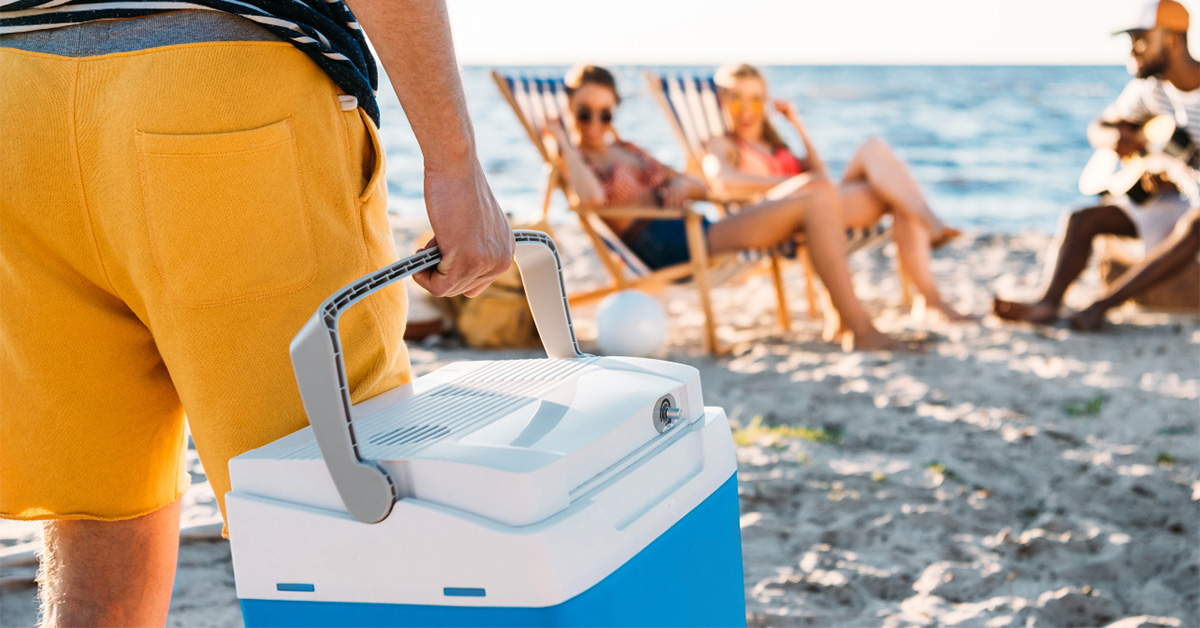
March 28, 2024
From packing drinks for a fun day at the beach to preparing meals for a weekend of backwoods camping, an efficient cooler is a necessity. The best coolers can maintain their cool temperatures for more than a day, are easy to carry and load, and are durable. So, what makes a cooler so good at preserving cold temperatures, even on a hot sunny day?
Thermal conductivity is a measure of a material’s ability to conduct heat. Conduction is one of three methods of heat transfer, the other two being convection and radiation. It is typically given in units of Watts per meter, per degrees Kelvin (W/m·K). This property quantifies how well a material can move heat from a high-temperature area to a lower one.
Imagine leaving a spoon in a hot cup of tea or coffee. The spoon will become hot as well because of its thermal conductivity. The heat is transferred from the liquid to the spoon via conduction.
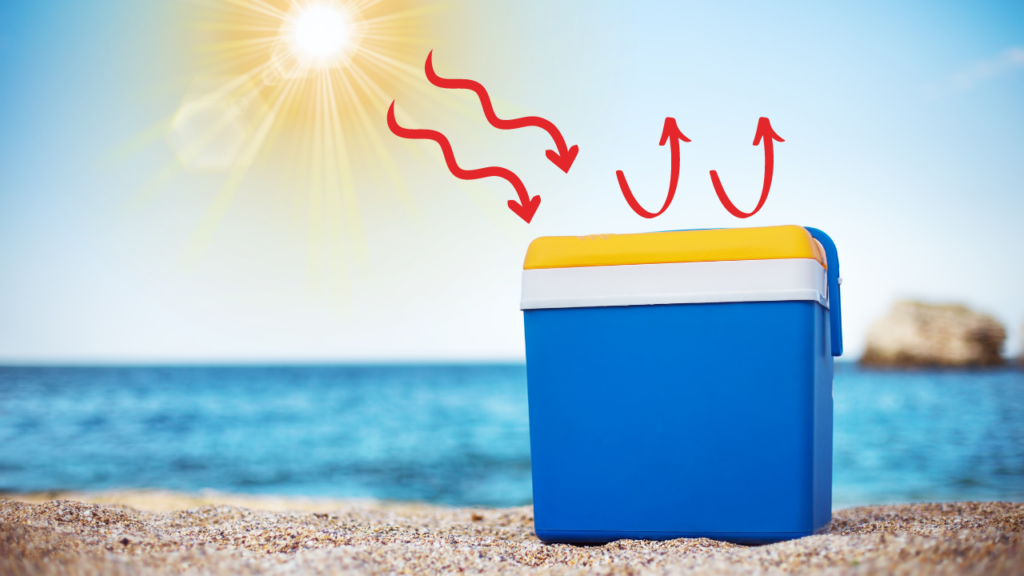
Figure 1. Coolers work by keeping heat out rather than keeping the cold inside the cooler.
Thermal conductivity plays a significant role in preserving the temperatures of certain materials. Think about a travel cooler, for example. Heat flows from hot to cold regions; in other words, coolers don’t keep coldness in but keep heat out, which is made possible because of thermal conductivity. Coolers are made of materials with low thermal conductivities to reduce heat flow and maintain the desired temperature of contents.
Basic coolers purchased in local hardware stores are made from polystyrene or spray foam walls with a thin polypropylene plastic exterior. The polystyrene pieces are cut to fit perfectly between the plastic exterior walls and, in some very basic cases, can be used alone as exterior walls (Figure 2). Manufacturers can use spray foam to fill the gaps between the inner and outer walls. They can add different densities of spray foam, but they typically use medium-density foam as it is cheaper and more lightweight.
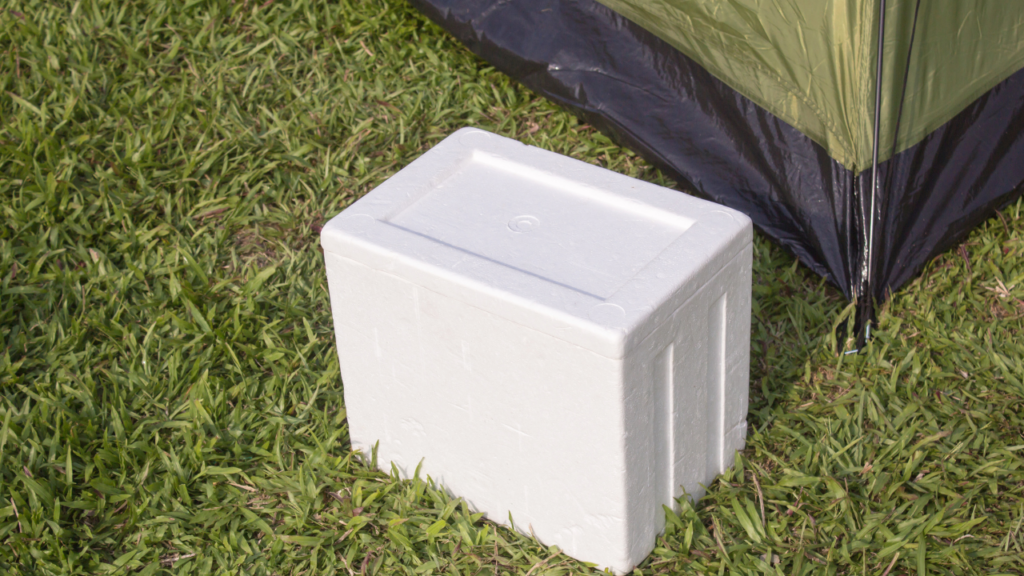
Figure 2. Basic polystyrene cooler.
High-end coolers like YETI, KONG and other premium brands use a different manufacturing process that creates a more durable outer shell and preserves temperature for much longer. The manufacturers typically use a rotationally molded polyethylene shell and pressure-inject it with high-density polyurethane foam to create these premium coolers. They mix additives with powdered plastic to make it UV and water-resistant during the roto-molding process. Roto molding also produces a thicker and more durable shell than polypropylene.
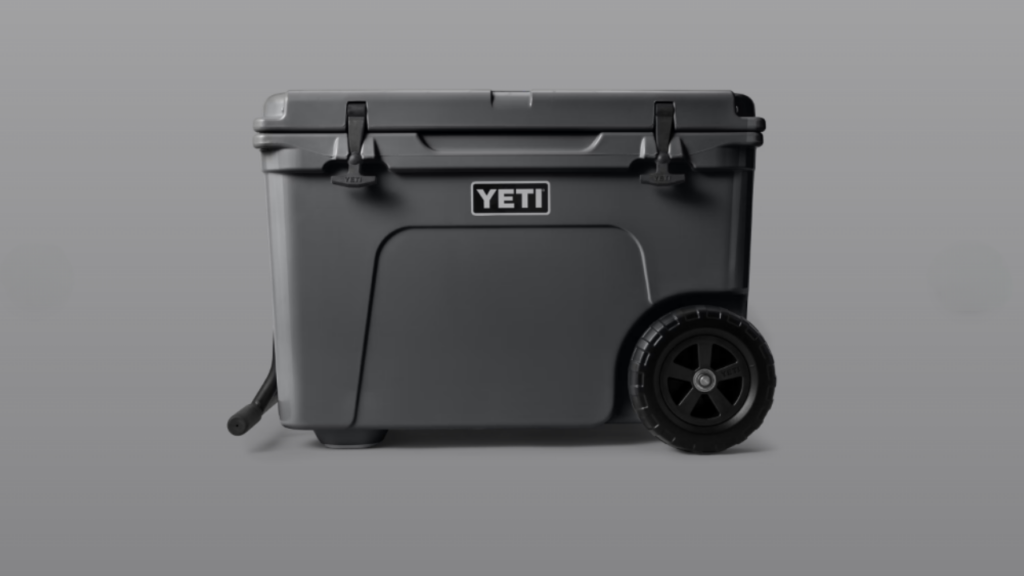
Figure 3. Rotationally molded YETI Tundra Haul cooler.
Polyurethane foam is one of the best materials used for insulation, with a thermal conductivity of around 0.02 – 0.03 W/m·K. Typically, 2-3 inches of insulation is used in high-end coolers to achieve such good temperature preservation. The dense foam also adds extra strength to the cooler, making it nearly indestructible.
Ultimately, with the number of different coolers on the market, not all are created equal. Each style has advantages and disadvantages; the best choice depends on personal preferences.
Table 1. Common materials used to make coolers and their properties.
| Material Type | Thermal Conductivity (W/m·K) | |
| Good | Roto-molded polyethylene | 0.41 |
| Better | Nylon | 0.25 |
| BEST | Polystyrene foam | 0.026 |
Polystyrene foam has very low thermal conductivity, which makes it effective at retaining internal temperatures. Polystyrene foam coolers are also highly affordable and lightweight compared to other coolers. However, due to their lack of a protective hard shell, they are less durable than other types of food containers and do not retain heat as well. Also, polystyrene is not the most environmentally friendly insulation, causing many to choose a more sustainable option.
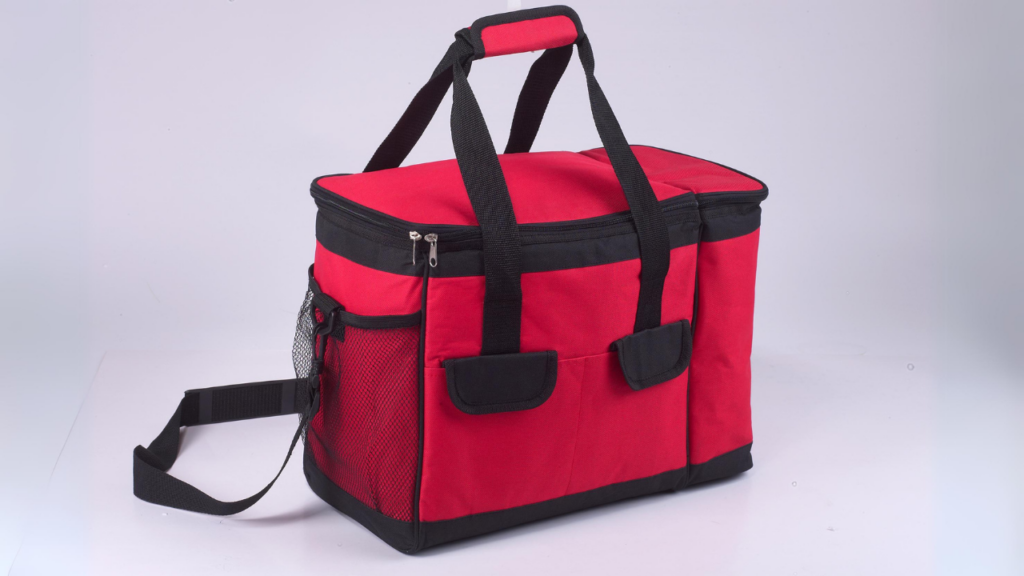
Figure 4. Soft cooler made from nylon.
Soft-shell coolers, made of nylon, are lightweight, compact, and incredibly convenient. They shrink to a very small size when not in use, making them easy to store and transport. Depending on the insulation type, soft-shell coolers can maintain ice for multiple days, offering a reliable cooling solution. However, it’s important to note that they may lack the structural rigidity that many hard coolers provide.
Despite having the highest thermal conductivity, when paired with a good insulation material hard shell roto-molded polyethylene coolers boast the best thermal retention among different types of coolers. On their own, roto-molded coolers cannot retain temperatures for more than a few hours. Their durability however is unmatched, and they typically have a much larger capacity to hold food and beverages. While they may be more expensive and heavier than soft-shell coolers, they are a long-term investment, offering superior ice retention. Some insulated hardshell coolers can keep ice frozen for up to two weeks!
Table 2. Common insulation materials used in coolers and their properties.
| Insulation Type | Thermal Conductivity (W/m·K) | Temperature Retention | |
| Good | Polystyrene foam | 0.025 – 0.040 | Up to 24 hours |
| Better | Foam (Polyurethane) | 0.022 – 0.035 | Up to 5 days |
| BEST | Vacuum | 0.004 – 0.020 | Up to 10 days |
Vacuum insulation is the most effective insulation in coolers. It involves creating a space without air, which significantly slows heat transfer down. The main disadvantage of vacuum insulation is its high manufacturing cost. Coolers with vacuum insulation may be pricier, but their exceptional thermal performance makes them worthwhile.
Polyurethane foam is the second most effective insulator in coolers. The dense foam contains smaller air pockets than polystyrene foam, resulting in better temperature retention. Polyurethane foam is also more durable and can undergo more wear and tear than polystyrene foam coolers.
Did you know that insulated food storage dates to 6000 BCE? While the original creator of the cooler is unknown, the first portable ice chest was patented by Richard C. Laramy in 1953. The rights were then sold to the Coleman Company Inc., an outdoor camping gear company that began mass production of the ice boxes and gave them their common name of the “cooler.” The cooler has since been redeveloped with new materials and features, but the basic design remains.
Coleman continues to be a leading cooler developer to this day, offering affordable products that can be found in most department stores. Brands such as KONG, Grizzly, ORCA, and YETI revolutionized the industry by developing rotationally molded coolers. This manufacturing method leads to a thick, uniform final product that is stronger and more durable than traditional coolers.
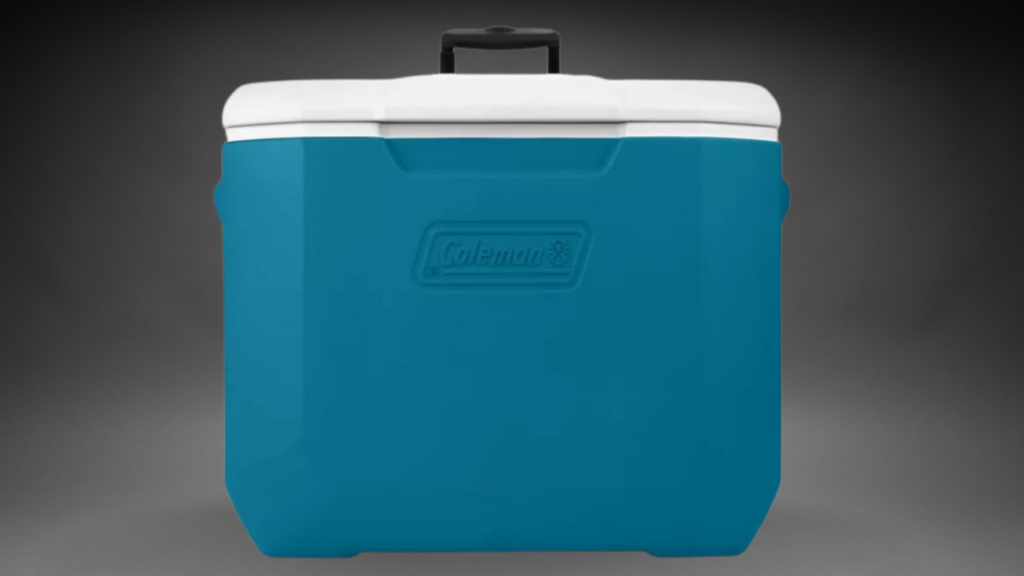
Figure 5. Coleman hard cooler
To take it one step further, YETI has been turning heads lately with the release of its latest V-Series cooler. The first of its kind, the YETI V-Series uses vacuum-insulated technology to provide the best thermal preservation on the market with up to 50% better ice retention than traditional coolers.
As we wrap up this cool journey through the world of advanced cooler technology, it’s clear that the science of thermal conductivity and insulation doesn’t just keep our drinks cold; it revolutionizes how we experience the outdoors. From backwoods camping to beachside barbecues, the suitable cooler makes all the difference.
At Thermtest, we’re not just about understanding thermal principles but about applying this knowledge to enhance your everyday life. Dive into thermal testing with us and discover how cutting-edge science can keep your adventures chilled to perfection.
Join us for the next installment of our series, where we’ll navigate the ins and outs of making informed choices for your next insulated product purchase.
Burger, N., Laachachi, A., Ferriol, M., Lutz, M., Toniazzo, V., & Ruch, D. (2016). Review of thermal conductivity in composites: Mechanisms, parameters and theory. Progress in Polymer Science, 61, 1–28. https://doi.org/10.1016/j.progpolymsci.2016.05.001
Insulating the cold: The science and choices behind effective coolers. Maria’s Condo. (2023, September 27). https://mariascondo.com/blogs/kitchen/coolers-and-insulacoolers-and-insulation-keeping-your-food-fresh-and-drinks-coldtion-keeping-your-food-fresh-and-drinks-cold
Materials database – thermal properties – Thermtest inc.. Thermtest. (2023, January 4). https://thermtest.com/thermal-resources/materials-database
McLean, R. (2023a, June 18). What are coolers made of and how do they work?. Hunting Waterfalls. https://huntingwaterfalls.com/what-are-coolers-made-of/
McLean, R. (2023b, July 24). 10 ways to insulate a cooler so it holds Ice longer: DIY Yeti. Hunting Waterfalls. https://huntingwaterfalls.com/how-to-insulate-a-cooler/
Mertes, A. (2023, February 10). A cool look at the history of portable coolers: From Igloo to yeti. Promotional Products Blog. https://www.qualitylogoproducts.com/blog/the-history-of-portable-coolers/
Our story | Coleman CA. Coleman Canada. (n.d.). https://www.colemancanada.ca/our-story.html
YETI. (n.d.). Yeti V series questions answered. YETI V Series Questions Answered. https://www.yeti.com/yeti-v-series-faq.html